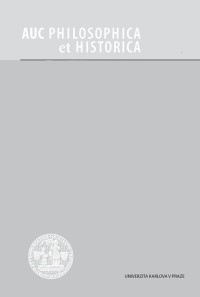The Significance of the Concept of Thauma in Patočka’s Philosophy of the History of Art
The Significance of the Concept of Thauma in Patočka’s Philosophy of the History of Art
Author(s): Felix BoreckýSubject(s): Philosophy
Published by: Univerzita Karlova v Praze, Nakladatelství Karolinum
Keywords: Jan Patočka; thauma; history of art; artistic era; aesthetic era
Summary/Abstract: In his essays on general history, Patočka locates the thaumatical shake-up together with the beginning of philosophy, politics, and history in classical Greece, when man first stepped back from being and became able to reflect freely upon everything that exists (his Lebenswelt). The author seeks to demonstrate that a similar thaumatical shake-up also occurred in art history with the coming of the aesthetic era. Here, art no longer serves to affirm a religious or ideological order, as it had in the preceding artistic era; instead, art turns towards the individual, who, by means of the work of art, reflects upon the world he or she lives in. The author concludes that the art of the artistic era has similarities with the pre-historical age in which thauma was not yet present, and the art of the aesthetic era shares features with the historical age in which, by contrast, thauma is the central factor. Liberating wonder brought the pre-historical age to an end in ancient Greece with the discovery of philosophy, politics, and history, giving birth to the historical age in Europe. By contrast, the artistic era did not cease to be dominant till modern times; it was then that thauma became the crucial aspect for the reception of art and gave birth to the aesthetic era. Here, the philosophy of art or aesthetics, the history of art, and the politics of art were revealed.
Journal: Acta Universitatis Carolinae Philosophica et Historica
- Issue Year: XX/2014
- Issue No: 1
- Page Range: 47-56
- Page Count: 10

